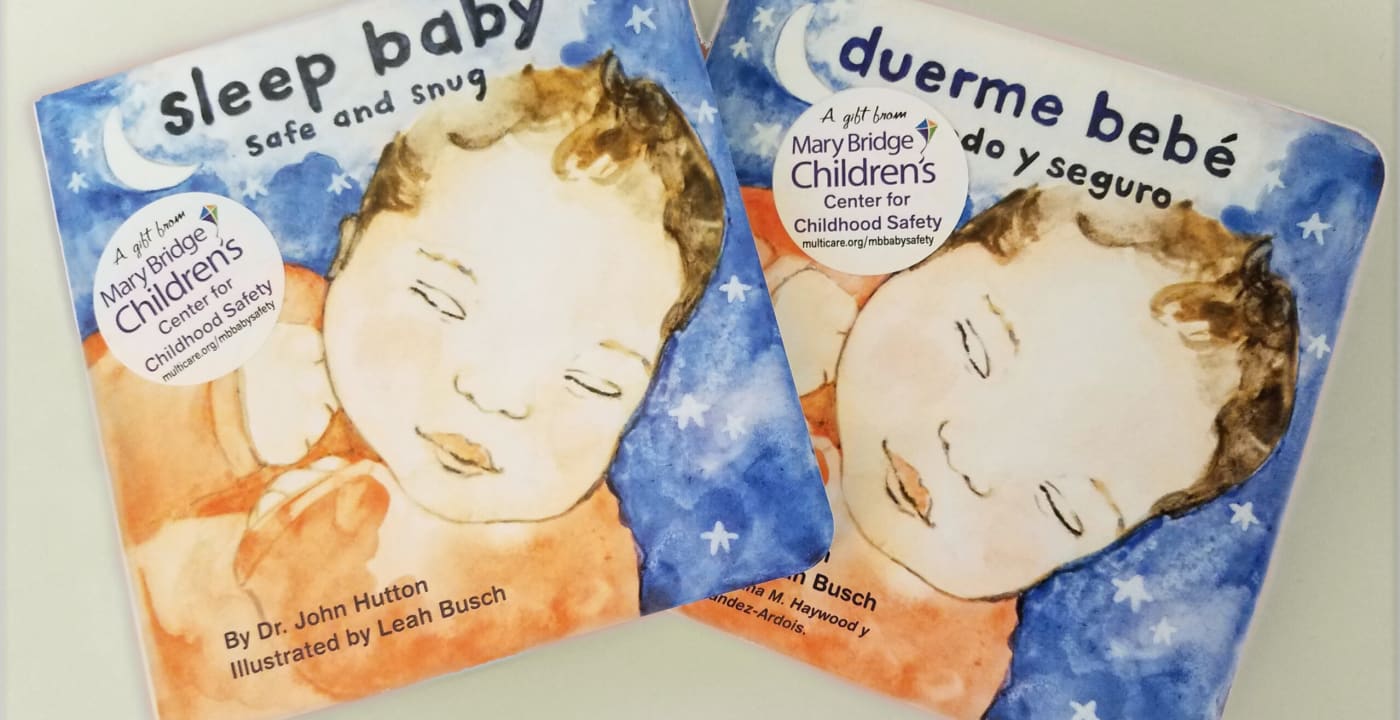Safe sleep for babies is as easy as A-B-C

By MultiCare Health System
Each year, approximately 3,500 healthy babies in the United States die in unsafe sleep environments, and about 10 happen right here in Pierce County.
October is SIDS Awareness Month and provides a reminder that safe sleep practices protect children not only from Sudden Infant Death Syndrome, but also from suffocation, strangulation or entrapment. These sleep-related deaths share similar risk factors and are most common in babies under 6 months of age, peaking between 1-4 months.
Erin Summa, Health Promotion Coordinator for the Mary Bridge Center for Childhood Safety, teaches the “ABC’s of Safe Sleep.”
“Babies sleep safest when they are Alone, on their Back, in a safe Crib,” Summa says. When babies fall asleep in swings, bouncers or car seats, she advises moving them into a crib as soon as possible.
Beyond the ABC’s, Summa shares the following safety tips, based on recommendations of the American Academy of Pediatrics:
- Place your baby on their back for every sleep — naps and nighttime.
- Use a crib/bassinet with a firm mattress and a tightly fitted sheet. Make sure it meets current federal safety standards (crib standards were improved in 2011).
- Keeping baby’s crib in your room is protective against SIDS, but avoid bringing the baby into your bed, or falling asleep while holding a baby.
- Keep the crib clear of soft items, like bumper pads, pillows and loose blankets.
- Have baby wear what they need to stay warm, but be careful not to overbundle because overheating increases SIDS risk. Look for wearable blankets or sleep sacks.
- Breastfeed baby as long as you can.
- Offer a pacifier for sleep times.
- Do not allow smoking around your baby.
- Vaccinate baby on schedule.
Education, not boxes, saves lives
One topic that has gained momentum is the use of “baby boxes,” based on a practice originating in Finland. Although the cardboard boxes have received a lot of media attention, Summa points out that there are many reasons Finland has lower infant mortality rates, including universal health care, generous family leave and comprehensive support and education.
“We just don’t know if the boxes themselves deserve any credit for these successes, especially considering that few Finnish babies actually sleep in them,” she says, adding, “The data just isn’t there.”
She reminds parents that current low-cost options, like portable cribs, meet all federal safety standards and will last much longer than a box that will be outgrown in a few short months.
“Not only do I worry about babies outgrowing the boxes while still at risk for SIDS,” she says, “but frankly I’m just not convinced they are a safe choice.”
Community partners work together to promote safe infant sleep
The Mary Bridge Center for Childhood Safety promotes safe infant sleep practices through patient education and giveaways at MultiCare hospitals and clinics, and also through a successful partnership with the Perinatal Collaborative of Pierce County.
Led by the Tacoma Pierce County Health Department, Northwest Infant Survival and SIDS Alliance and Mary Bridge, the collaborative’s safe sleep committee has partnered with local community organizations to ensure that new and expectant families are educated on safe infant sleep practices. If they don’t have a safe place for their baby to sleep, a free portable crib is provided. This project has distributed 550 cribs to needy families since 2013 — through 18 different clinics, hospitals and community programs in Pierce County.



